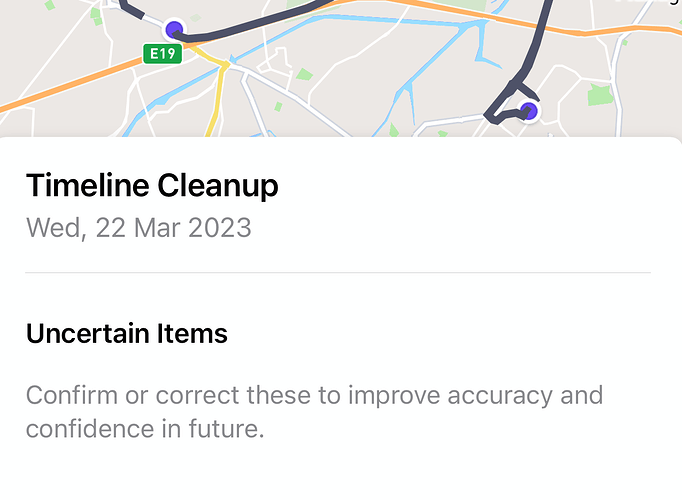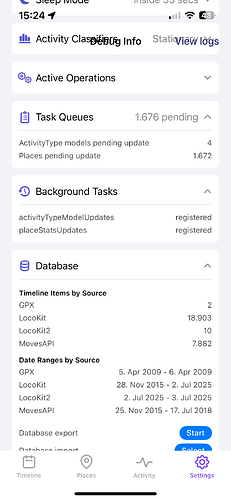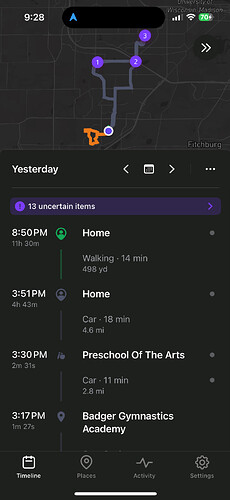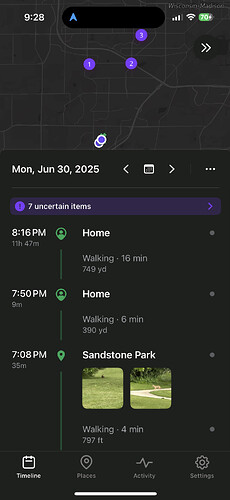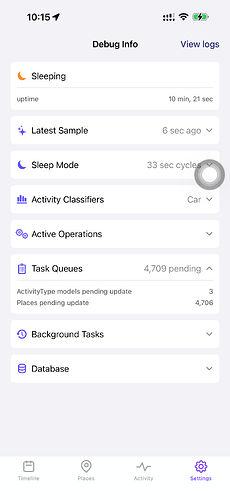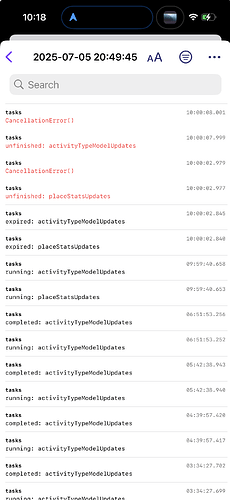Oh user edits are already trusted 100%! They’re treated as 100% confidence assignments.
Though the catch is that the processing engine, or at least the part that does item merging and edge corrections, doesn’t have any knowledge of user edits (nor can it). So if you split out a segment, then the processing engine looks at the sequence of timeline items, it might merge it back in again, because it doesn’t meet the requirements for being its own timeline item. And there’s no available information for the processing engine to know that you split that out manually, so it can’t know whether it’s working on automatic data or manually edited data.
The requirements for a Trip item to be a “keeper”, in the sense that it’s allowed to stand alone as its own timeline item, are quite minimal. I think it’s… let me check… ok here we go:
public static let minimumValidDuration: TimeInterval = 10
public static let minimumValidDistance: Double = 10
public static let minimumValidSamples = 2
public static let minimumKeeperDuration: TimeInterval = 60
public static let minimumKeeperDistance: Double = 20
So first of all it has to pass the “valid” test, ie 10 seconds, 10 metres, and 2 samples (enough for a start and an end). Easy.
Then it needs to pass the “keeper” test, ie 60 seconds and 20 metres. Also pretty easy. (Though I’m inclined to reduce that 60 seconds to something shorter. There’s plenty of times there’s a short walk between two places, maybe 30 seconds, and it feels like it should be its own timeline item).
The catch with underground train trips is that it can often be that no data is recorded at all. No new location data is coming in, so no new samples are recorded. Then there’s no samples to work with, so it all falls down.
And that’s something I can tweak and fix! I can make sure that it keeps predicting new location coordinates, and keeps recording samples with at least pedometer and accelerometer data, perhaps every 10 seconds or so. (I think it already does that now, but at 60 second spacing maybe).
I also did some work to improve underground train trip recording many years ago (like 6+ years ago) that worked quite well, with special case tweaks to the underlying location data filtering system (the Kalman filter). That work actually got lost somehow, and disappeared from Arc Timeline app. No idea how - I just realised one day that it wasn’t there anymore, and could only vaguely remember what it was.
Anyway, that work I can redo. I know this stuff inside and out (through years of painful experience I’m probably one of the main experts on this stuff now). So I can just recreate that testing and tweaking work, to get the low level location data recording working better in those special case conditions.
I just need to spend a day going back and forth on underground trains, collecting data and observations. I’ll look like a freak to the staff, but it’ll be worth it 
![]()


